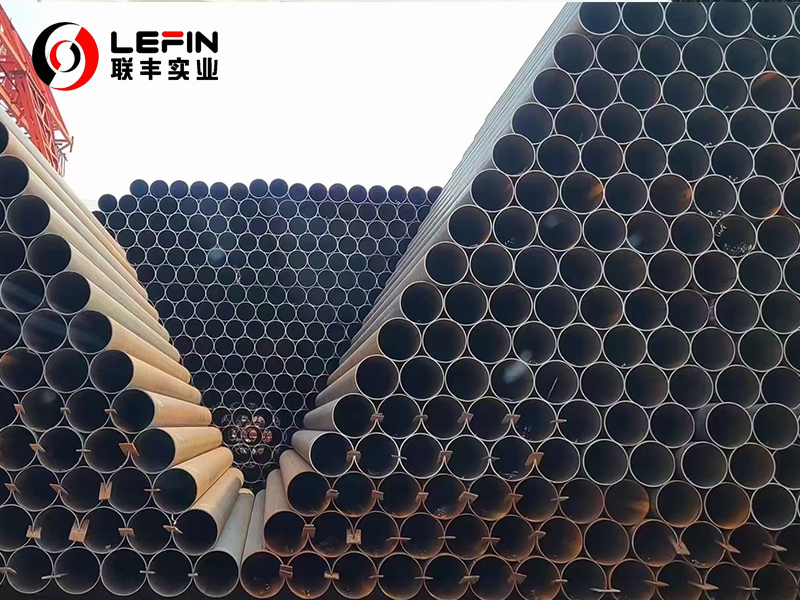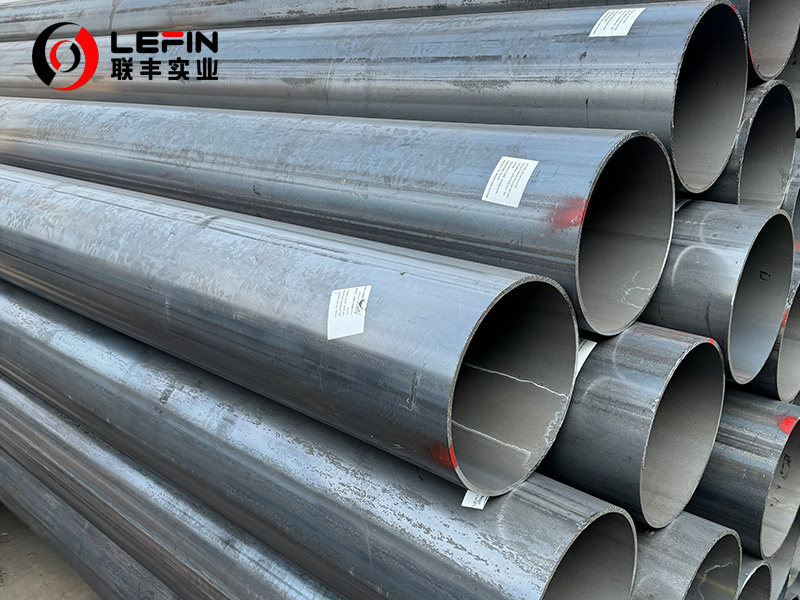



- Details
-
Material Overview
AISI 1117 is a low-carbon, free-machining steel classified under the American Iron and Steel Institute (AISI) standards. It contains added sulfur and phosphorus to improve machinability, making it suitable for precision parts and piping applications requiring extensive machining.
Chemical Composition
The typical chemical composition of AISI 1117 steel is:Element
Content (%)
Iron, Fe 98.33 - 98.78 Manganese, Mn 1.0 - 1.30 Carbon, C 0.14 - 0.20 Sulfur, S 0.080 - 0.13 Phosphorous, P 0.040 ● Manganese (Mn): 1.00–1.30% (enhances strength and hardenability)
● Carbon (C): 0.14–0.20% (low carbon content for good weldability and formability)
● Sulfur (S): 0.08–0.13% (increases machinability by forming MnS inclusions)
● Phosphorus (P): ≤ 0.040% (improves machinability but may reduce ductility)
● Iron (Fe): Balance
● The increased sulfur content enhances machinability but may reduce weldability and impact toughness.
Mechanical Properties
The mechanical properties of AISI 1117 carbon steel are outlined in the following table.Properties
Metric
Imperial
Tensile strength 475 MPa 68900 psi Yield strength 400 MPa 58000 psi Bulk modulus (typical for steel) 140 GPa 20300 ksi Shear modulus (typical for steel) 80.0 GPa 11600 ksi Elastic modulus 190-210 GPa 27557-30458 ksi Poisson's ratio 0.27-0.30 0.27-0.30 Elongation at break (in 50 mm) 15% 15% Reduction of area 40% 40% Hardness, Brinell 137 137 Hardness, Knoop (converted from Brinell hardness) 156 156 Hardness, Rockwell B (converted from Brinell hardness) 75 75 Hardness, Vickers (converted from Brinell hardness) 143 143 
Common Applications
AISI 1117 steel pipes are used in:● Shafts, pins, and fasteners (machined components)
● Hydraulic systems and low-pressure fluid transport
● Automotive non-critical parts (bushings, spacers)
● General machinery and tooling components
Fabrication And Weldability
Machining: Excellent due to sulfur inclusions.Welding: Not recommended for critical welds (sulfur causes hot cracking). If welding is necessary, preheating and low-hydrogen electrodes are advised.
Cold Working: Suitable for bending and forming.
Manufacturing And Standards
Pipe Types: Seamless or welded (ERW/electric resistance welded).Standards: ASTM A53 (general pipe standards), ASTM A106 (high-temperature service), ASTM A519 (seamless mechanical tubing), G11170(UNS), or custom machining specifications.
Surface Treatment: Often supplied as-drawn, turned, or with protective coatings (e.g., oil, zinc plating).
Advantages And Limitations
Pros: Cost-effective, easy to machine, readily available.Cons: Lower corrosion resistance (requires coatings), limited strength for high-load applications.
Conclusion
AISI 1117 carbon steel pipes are cost-effective for machining-focused applications but are limited in weldability and strength compared to higher-grade steels. They are best suited for components where ease of fabrication outweighs the need for structural robustness.


AISI 1117 Carbon Steel Pipe
- Details
-
Material Overview
AISI 1117 is a low-carbon, free-machining steel classified under the American Iron and Steel Institute (AISI) standards. It contains added sulfur and phosphorus to improve machinability, making it suitable for precision parts and piping applications requiring extensive machining.
Chemical Composition
The typical chemical composition of AISI 1117 steel is:Element
Content (%)
Iron, Fe 98.33 - 98.78 Manganese, Mn 1.0 - 1.30 Carbon, C 0.14 - 0.20 Sulfur, S 0.080 - 0.13 Phosphorous, P 0.040 ● Manganese (Mn): 1.00–1.30% (enhances strength and hardenability)
● Carbon (C): 0.14–0.20% (low carbon content for good weldability and formability)
● Sulfur (S): 0.08–0.13% (increases machinability by forming MnS inclusions)
● Phosphorus (P): ≤ 0.040% (improves machinability but may reduce ductility)
● Iron (Fe): Balance
● The increased sulfur content enhances machinability but may reduce weldability and impact toughness.
Mechanical Properties
The mechanical properties of AISI 1117 carbon steel are outlined in the following table.Properties
Metric
Imperial
Tensile strength 475 MPa 68900 psi Yield strength 400 MPa 58000 psi Bulk modulus (typical for steel) 140 GPa 20300 ksi Shear modulus (typical for steel) 80.0 GPa 11600 ksi Elastic modulus 190-210 GPa 27557-30458 ksi Poisson's ratio 0.27-0.30 0.27-0.30 Elongation at break (in 50 mm) 15% 15% Reduction of area 40% 40% Hardness, Brinell 137 137 Hardness, Knoop (converted from Brinell hardness) 156 156 Hardness, Rockwell B (converted from Brinell hardness) 75 75 Hardness, Vickers (converted from Brinell hardness) 143 143 
Common Applications
AISI 1117 steel pipes are used in:● Shafts, pins, and fasteners (machined components)
● Hydraulic systems and low-pressure fluid transport
● Automotive non-critical parts (bushings, spacers)
● General machinery and tooling components
Fabrication And Weldability
Machining: Excellent due to sulfur inclusions.Welding: Not recommended for critical welds (sulfur causes hot cracking). If welding is necessary, preheating and low-hydrogen electrodes are advised.
Cold Working: Suitable for bending and forming.
Manufacturing And Standards
Pipe Types: Seamless or welded (ERW/electric resistance welded).Standards: ASTM A53 (general pipe standards), ASTM A106 (high-temperature service), ASTM A519 (seamless mechanical tubing), G11170(UNS), or custom machining specifications.
Surface Treatment: Often supplied as-drawn, turned, or with protective coatings (e.g., oil, zinc plating).
Advantages And Limitations
Pros: Cost-effective, easy to machine, readily available.Cons: Lower corrosion resistance (requires coatings), limited strength for high-load applications.
Conclusion
AISI 1117 carbon steel pipes are cost-effective for machining-focused applications but are limited in weldability and strength compared to higher-grade steels. They are best suited for components where ease of fabrication outweighs the need for structural robustness.


Related products
Product Consulting

Address: Hengtai Road,Daqiuzhuang Town,Jinghai County,Tianjin,China
Mob: +8615122229899(whatspp)
Phone: +86 22 58171905
Fax: +86 22 58171902
E-mail:info@lefinsteel.com
Get company updates

Tianjin Lefin Industrial Co.,Ltd. All rights reserved City sub-station SEO www.300.cn

